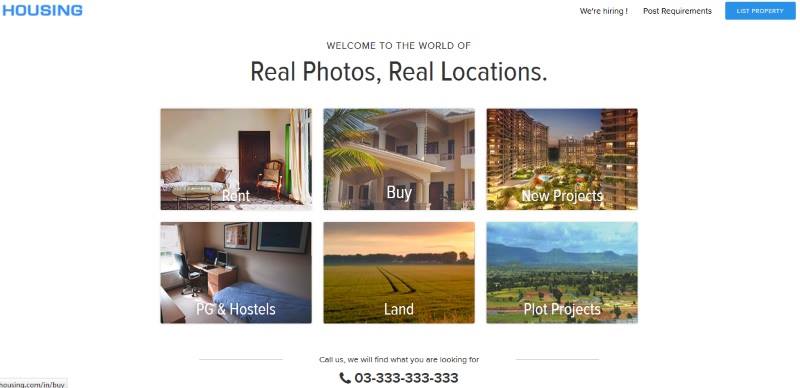It is estimated that more than 15% of the country’s population was using internet by the end of 2013. The maximum usage today has been witnessed in the major cities and economic hubs of India. The proliferation of internet friendly mobile devices has further enhanced the reach of the masses. The success of numerous online ventures in the past few years has been the proof of the online market penetration.
However one of the factors that constantly haunts an internet user is the reliability of information available online. This issue becomes even more prominent when it comes to sale of physical objects via digital means. Physical object in this context could be a second hand car or a property in a major city.
In the past, most housing portals have provided such information to buyers and sellers which can best be categorized as marketing content. People earlier merely chose the portals to identify approximately where properties were available for sales. Then all the research is done by physically visiting the property and neighbourhood. Given the high demand, the real estate portals did not bother to focus on the accuracy of information.
It is this gap between reality (of realty) and online information that housing.com endeavours to bridge.
How does housing.com Bridge the Information Gap?
One of the first things that the founders of housing.com did was to eliminate the basic problems of online house hunting. The accuracy of photographs earlier was a major issue. Housing.com introduced a feature called “verified listing” where representatives of housing.com would visit a property and take photographs. Only these actual photos would then be posted on the website.
The second differentiating feature was the introduction of maps. A person searching for-say- flats in Faridabad- could view the property on a map which enabled a buyer/investor to inspect the locality as well as associated infrastructure. This helped in better decision making due to a macro view of surroundings.
The map results now come with customization features where a person can increase or decrease the radius of search. Another interesting feature of the map is that one does not see a “scatter view” of properties. One merely sees clusters marked by one black “snooker ball” with a number. This number indicates the number of houses in the vicinity of that particular point. Zoom in and one sees the properties separately. This further simplifies the search process.
What other Information is provided?
Let us take the previous example where a buyer was searching for flats in Faridabad. Such a buyer would want as much information available as possible to shortlist a property. Housing.com has featured information about demand and available inventory on the city (amongst others). This ensures that when a buyer is looking for a property, he/she is not focusing on closed deals. There is a whole inventory demand map available which allows a user to view the available properties sector wise in Faridabad. The map also provides the current requirements for the said property also.
Additionally, one can seek information regarding the value of a property before negotiating the price. Housing.com utilizes intensive data driven techniques to provide the aforementioned information accurately. Likewise, there are numerous other featured specifications available for property search in various other cities of the country.
In Conclusion
Housing.com makes use of technology and extensive analysis to help a buyer find the correct property of his/her choice. This is how it simplifies the house hunting process.





